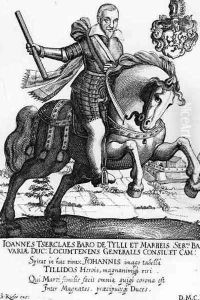Eberhard Kieser Paintings
Eberhard Kieser was a notable German engraver and publisher active during the late 16th and early 17th centuries. Born in 1583, his life and work were deeply intertwined with the cultural and artistic movements of his time, particularly within the context of the Holy Roman Empire. Although not as widely recognized as some of his contemporaries, Kieser's contributions to the art of engraving and publishing have garnered appreciation among art historians and collectors alike.
Kieser's most significant contribution to the art world is perhaps his involvement in the production of the 'Todten-Tantz,' also known as the 'Dance of Death.' This was a series of engravings that depicted various figures from all walks of life being led into the afterlife by personifications of Death, a common theme in European art that sought to remind viewers of the universality and inevitability of death. The 'Todten-Tantz' was notable not only for its artistic merit but also for its reflection of the socio-political and religious uncertainties of the time, particularly in the wake of the Reformation and the various conflicts that plagued Europe.
Kieser's work as a publisher also set him apart. He was based in Frankfurt, a major center for the book trade in the Holy Roman Empire, which allowed him to collaborate with numerous artists and writers. His publishing house contributed significantly to the dissemination of both religious and secular works, reflecting the tumultuous intellectual and cultural currents of early modern Europe.
Despite his contributions, many details of Kieser's life remain obscure, and his work has often been overshadowed by more famous figures of the time. However, his engravings continue to be studied for their intricate detail and historical value. Eberhard Kieser passed away in 1631, leaving behind a legacy that, while not widely celebrated, plays an important role in the history of European art and publishing.

